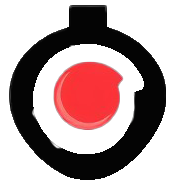At Amazon, there are no PowerPoints at key meetings. Rather, a well-written and reasoned Word document is distributed and read by everybody at the meeting. Then a real meeting, which involves discussion and interrogation of the material, takes place. Everybody has the same information, and reading the information is far more time-effective than being paraded through a few words or charts flashed in sequence slowly.
In many cases, even this well-crafted Word document may not be needed and could lead to as much pre-machination and massaging as a PowerPoint deck.
The next time we ask for a deck or are asked to write a deck, let’s start by asking why.
This article is part of Branding Strategy Insider’s newsletter. You can sign up here to get thought pieces like this sent to your inbox.
Often, there are real reasons and needs to pull together a deck from a business pitch to a strategic plan. Still, often it is a lame substitute for a conversation, a mechanism to delay decisions, a way to extract information from a supplier or partner for free or just the way to “make work” or pretend to work. How much of your time is spent preparing or reviewing decks?
So let us ask:
- What are we trying to achieve or communicate?
- Is a deck the best way of doing so? Or can we have a conversation, have a meeting without a deck, or send an email?
- If it is how can we distill it down to key points and minimize the time spent on putting it together?
Why most decks should be no longer than 9 slides.
Think of all the presentations you have sat through or produced. Many were fifty, sixty or hundred slides long. How many slides do you remember? How many stood out or made a difference?
Presentations are often unnecessarily long because:
a) We often confuse volume with quality.
b) Many people feel that without a huge deck, they cannot justify their expenses or point of view.
c) Often, firms are paid by time exerted, so they are incentivized to bloat and be baroque.
d) We often focus on how the colon works versus showing the cool shit by spending too much time on the process, the background, the history, the tools, the sources of data,
Over the years, here is some learning gleaned from the best storytellers, salespeople, and communicators, reduced to a simple exercise.
The best presentations are ones where you write the deck but never present or share it.
Begin with a letter-sized sheet of paper and a pen or pencil.
Place the sheet so it is in landscape mode.
Pretend you are playing tic tac toe and draw two vertical and two horizontal lines.
You are now looking at a slide view of nine slides on a single piece of paper.
Slide 9 is the appendix slide, where you will list supporting material, and will be the last slide you fill in.
Slide 8 is the Desired Action slide, which highlights what you want to get from the meeting/ have the person you are presenting to act on.
This (Slide 8) is the first slide that you fill in, since this is the point of the meeting you are having.
Then the focus of your work is slides 4, 5, and 6, which you may want to label Insights, Ideas, and Imagination. What insights about customer, consumer, marketplace, competition will you be sharing that get your audience to THINK differently? What one, two, or three big ideas are you delivering that will make their customers or consumers SEE them differently? What provocations, perspectives, points of view are you communicating that will get your audience to FEEL differently about their business, their future, or you?
The goal of slides 4, 5, and 6 are to make sure you get the action you are looking for on slide 8.
Slide 7 is the Proof of why you or your firm should be believed, and this is where you show or share the cool results you have driven for other people.
Now you are ready to write the opening slides 1, 2, and 3, which are very key. Slide 1 should be a title that will make your audience come to attention, slide 2 a promise or some other benefit or outcome you will drive (e.g. your firm will generate 20 percent improvement or x or y) and then slide 3 which is the agenda slide or navigation slide which notes that you will be sharing ideas, insights, imagination and supporting material….but are ready to jump into any section based on what your audience is interested in first or how you have read the room at the beginning.
Finally, slide 9, which is the appendix of all the supporting material that the first 8 slides are built on, and can include data, cases, and other stuff.
Once you write this out, you will find that you can make the entire presentation often without the presentation, and at minimum, you no longer have a long, ponderous deck.
As a marketer, your job is to grow the business. Accelerate growth with The Blake Project.
Instead, we have perspectives, provocations, points of view, insights, ideas, imagination, promises of delivery, and a warehouse of stuff they can rummage through, assuming they are interested.
Try this approach.
It works both as a way of doing but more importantly as a way of getting points across, telling stories, making a sale, and differentiating from others.
Contributed to Branding Strategy Insider by Rishad Tobaccowala, Author of Restoring The Soul Of Business: Staying Human In The Age Of Data
At The Blake Project, we help clients worldwide, define, and articulate what makes them competitive and valuable. Please email us to learn how we can help you compete differently.
Branding Strategy Insider is a service of The Blake Project: A strategic brand consultancy specializing in Brand Research, Brand Strategy, Brand Growth and Brand Education
FREE Publications And Resources For Marketers
Post Views: 46










